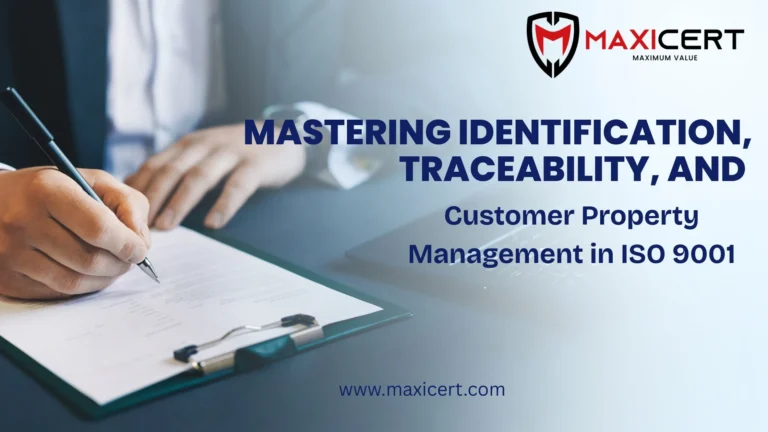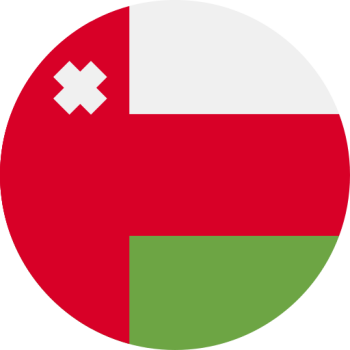Mastering Identification, Traceability, and Customer Property Management in ISO 9001

Introduction
Effective management of identification, traceability, and customer property is essential for ensuring product and service quality while maintaining customer trust. ISO 9001 certification emphasizes the importance of these quality control processes to achieve conformity and meet regulatory or contractual requirements. This blog explores practical strategies aligned with ISO 9001:2015 for identifying process outputs, maintaining traceability, and safeguarding customer property—whether it’s physical materials, intellectual data, or personal information. Learn how to implement these ISO 9001 quality management system (QMS) controls to enhance operational efficiency, ensure ISO compliance, and meet certification standards with support from the best ISO consultants.
According to clause 8.5.2 of ISO 9001 - Identification and Traceability
Where you need to identify process outputs, the methods used and the records (when necessary to ensure conformity) to be kept need to be defined.
Process outputs are the result of providing a product or service, it can be the product at an intermediate or final stage as well as the service that is being delivered. In software, it can be the code that is being developed. The recording of part numbers, job numbers, bar codes, the name of the person who carried out the service, color codes or the revision status and version number of a software package being developed are just some examples of identification.
In software development, software is identified with a version. During the development process itself. the software is typically on a development server in addition to its identification.
Request A Free Quote
Product status is knowing where it is now and, in the case of services, what stage it is at. Some examples of status are-
- In a hotel, since each room is made up after the preceding guests have departed, the room status is changed from “not ready” to “ready”. The room service personnel normally ring the reception desk to give this advice, which is noted by some suitable method.
- In servicing a car, the status of each operation on the service check list is changed from “to be done” to “done” by ticking off each operation on completion.
- In inspection of manufactured products, the inspector affixes a sticker “ACCEPTED” on the accepted items and puts them in an area intended for accepted items. The inspector affixes a sticker “REJECTED” on the rejected items and puts them in an area intended for rejected items.
- In a phone answering service, the status of messages taken is initially “message received”. On passing the message on to the client, the status changes to “message delivered”. The phone answering service should have some suitable means of identifying the status.
- In a manufacturing environment it might be a tag indicating that the epoxy has completed the requisite curing cycle.
Traceability is knowing where a product or its components came from. Traceability can be conducted using lot numbers, tags, bar codes, serialization, certificates of analysis. In the service industry. it can be who provided a specific service (e.g. the person who provided customer service in a call center or the person who cleaned a hotel room.
It can be achieved by the appropriate documented information of identification for the product or service, including records of the inspection or test throughout product and service provision. Identification and traceability can also be achieved by physical controls such as locations where different types of products are located. Additional controls in the service industry may be a button on a restaurant server that indicates the person is in training.
In some industries, identification and traceability are specified requirements either by regulation or contract.
For example, in pressure vessel manufacture, it is common for the identification of a given material to be recorded and traced through all manufacturing stages. Thus, the end component can be traced to the original material certificate.
According to clause 8.5.3 of ISO 9001 - Property belonging to customers or external providers
Examples of where the customer or an external provider provides you with material, equipment, knowledge, or data to be used in producing the products or delivering the service include –
- instruments provided for measurement purposes,
- a motor vehicle left for service or repair,
- components for placement on a printed circuit board,
- special packaging for the finished product, a domestic appliance (e.g. a washing machine) left for repair.
- financial and personal data provided to a credit card company
- personal medical data of patients at a family doctor, clinic, hospital, etc.
- Details of an organization’s financial affairs are given to a bank to obtain finance.
- a customer specification sent to a design consultancy, and raw materials to be used in the product
- equipment that an external provider installs in your organization for use, but that you do not purchase
Any restrictions or regulations regarding personal data will need to be followed.
You need to have a process for handling any material that your customer gives you, or for reporting if their property is damaged, lost or is otherwise unsuitable for use. Organizations must also have a process for when the property is used in a manner in which it is not authorized (e.g. used for another customer). Documented information of these types of communications needs to be retained.
Some examples of measures that you might adopt to protect your customers’ intellectual properties or personal data are:
- a specific location or file to store customers’
- intellectual data, including product drawings, patent
- information, performance and sales figures, password protection of computer files,
- a procedure requiring customer specifications and data deleted at the end of a project.
- Limiting access to information to specific and trained individuals.
The requirements in Section 7.5.3, relating to documents of external origin, are applicable to your customers’ intellectual property or personal data.
Conclusion
Proper management of identification, traceability, and customer property is a cornerstone of a robust ISO 9001 Quality Management System (QMS). By implementing clear processes for identifying products and services, maintaining traceability, and protecting customer assets, organizations can ensure ISO 9001 compliance, reduce risks, and build stronger customer relationships. Whether you’re in manufacturing, software development, or service delivery, these practices are key to achieving operational excellence and meeting ISO 9001 certification requirements.
For expert guidance and seamless implementation, trust Maxicert—the best ISO consultants dedicated to helping you meet global standards.
Partner with Maxicert today and strengthen your ISO 9001 QMS for sustainable success.

Get In Touch

Get In Touch

Get In Touch
Need A Free Estimate?
Get a free consultation and Checklist to get certified for ISO , HALAL, CE Mark Certification.
FAQ
What is the importance of traceability in ISO 9001?
Traceability ensures that products, components, or services can be tracked throughout their lifecycle. It helps organizations identify the source of issues, comply with regulations, and maintain accountability in production and service delivery.
2. How can organizations protect customer property?
Organizations can protect customer property by storing it securely, limiting access to authorized personnel, and implementing procedures to handle damage, loss, or misuse. For intellectual or personal data, measures like password protection and data deletion protocols are essential.
3. What are some examples of identification methods in ISO 9001?
Identification methods include using part numbers, job numbers, bar codes, color codes, version numbers (e.g., for software), and status labels (e.g., “Accepted” or “Rejected”). These methods help track products and services at various stages of production or delivery.



